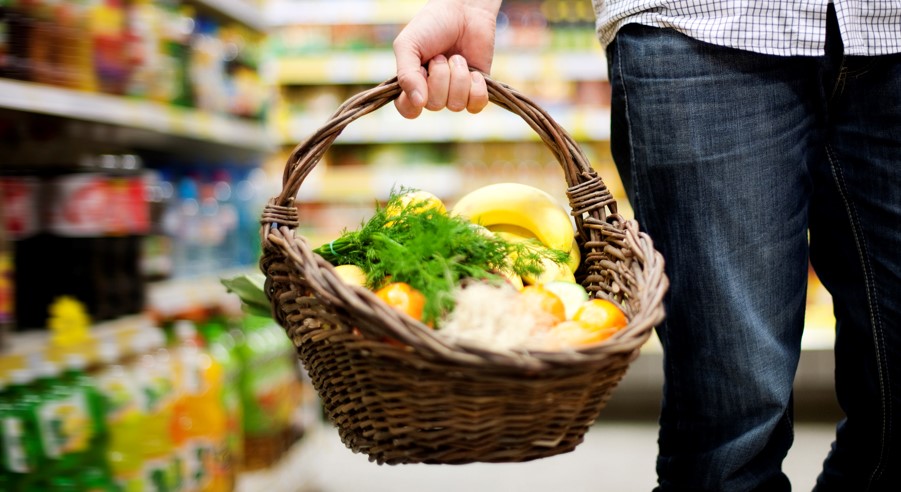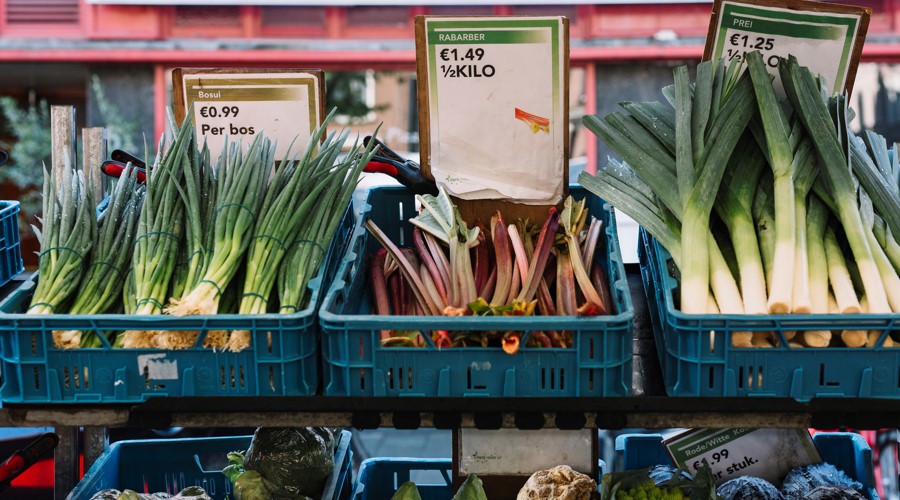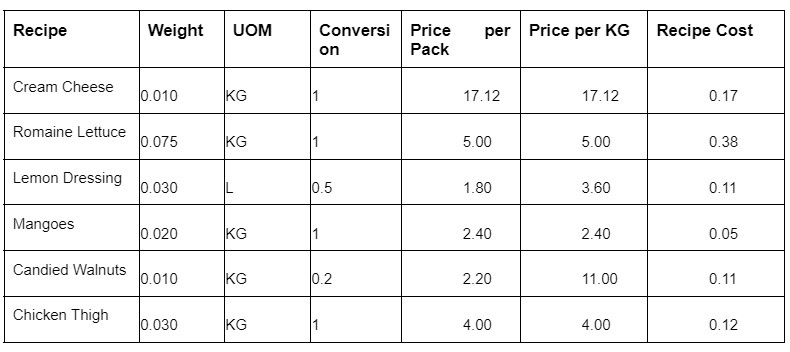The biggest problems restaurants encounter is having high food costs. In order to turn a profit, restaurants must make sure that they do not overspend on food. In this article, we will be answering the question that most restaurant managers would like to know, how much does a restaurant spend on food? Besides, we are going to answer questions about
- What do restaurants spend the most on?
- What factors influence restaurant food spending?
- How much do restaurants spend on food per month
- What percentage is the food cost of a restaurant?
- How do you calculate food cost in a restaurant?
- How can you determine whether your restaurant is spending too much on food?
- How often do restaurants order food?
What do restaurants spend the most on?

Restaurants have four major spend groups and all of them are necessary costs to run the business. However, they usually have a threshold and it is important to not exceed it so your restaurant can still turn a profit.
Food Spend
The amount you spend on food is usually the largest of all restaurant expenses. The other term that people use for food spend is Cost Of Goods Sold. Basically, it is the total spend that your restaurant incurs in all the ingredients needed to produce the products you sell for a given timeframe. The optimal food spend a restaurant should have is 25-40% as a percentage of sales.
Staff Spend
Next on the list of top restaurant expenses is the staff spend. A restaurant is only as good as their staff and it is important that you hire the right people. The staff spend for your restaurant will include monthly and hourly payroll, taxes, and staff benefits. Ideally, a restaurant should spend around 30% of its sales to their staff.
A term that we widely use in the restaurant industry is prime cost. This is the sum of a restaurant’s food spend and staff spend and we usually calculate it as a percentage of sales. On average, a restaurant’s prime costs are more or less 65% of a restaurant’s total sales.
Lease and Utilities Spend
A restaurant’s prime costs will always be the bulk of the expenses. However, the amount you spend on your lease and utilities is also a big expense.
The rate for your lease depends on the size of the property. Naturally, the bigger the space, the more expensive your lease is since lessors usually price their property per square meter.
For example, B’s Burgers found two potential locations for their restaurant. Both are being leased out at $20 per square meter but location A is 50 square meters and location B is 100 square meters. Owners will now have to decide if they need the extra space or if the smaller space will suffice for their operations.
Marketing and Advertising Spend
A restaurant usually allocates around 5% of their total sales for marketing. Some examples on where to use your marketing budget are social media marketing, email marketing, influencer marketing, radio advertisements, billboards, and more.
What factors influence restaurant food cost?

How much does a restaurant spend on food per month depends on multiple factors. Most of them are predictable and you have control over them. Below we introduce a quick list of them along with some tips that will help you avoid overspending food costs.
Seasonality of Ingredients
Each season has products that fill your menu with a variety of flavors. It is important to know that out-of-season products have a higher cost than in-season ones. The primary reason is that there’s an abundance of supply locally that leads to lower costs – despite having high demand.
Tip: One strategy that we recommend is to bulk buy produce during the summer and freeze them during winter so you do not have to purchase when a product is not in season. Create a list of ingredients that you need and note when they are in-season so you can plan and purchase in bulk.
Hidden Charges from Suppliers
How much does a restaurant spend on supplies related to food isn’t actually all about food costs. Have you noticed additional charges that suppliers add to their invoice? On top of the food cost, suppliers usually add transportation fees, packaging fees, marketing fees, taxes, and more. These charges add up and will shoot up the amount you spend on food.
Tip: These charges will not go away so it’s best to work around them. One tip we can recommend is that whenever possible, purchase your food from one vendor. As a result, the volume of your orders will be enough for you to get a discount. To add, look to organize your deliveries only once or twice a week so you don’t pay extra for transportations costs.
Imported vs. Local Ingredients
How much does a restaurant spend on food depends also on the origin of ingredients. Imported products are usually cheaper than locally-sourced products, especially when bought in big quantities.
Tip: We recommended creating a masterlist of all your ingredients and see which one’s imported or local. After looking at all your locally sourced ingredients, identify which ones can be imported without compromising the quality of your food and at the same time, save on food costs.
Competition
When competition is high, vendors usually cannot overcharge on their products. Restaurants usually have someone monitoring the market and look to get the best price possible.
Tip: For our recommendation, look to ask for quotes from multiple suppliers before committing to one. Do your research and find out which one gives you the best opportunity to succeed. Try EagleOwl marketplace for you to be able to meet and compare suppliers.
Other Factors
Unfortunately, there are other unforeseen factors that influence a restaurant’s food spend. For example, the COVID-19 pandemic has led to supply chain disruptions that led to higher cost of food.
To add, weather interruptions, government regulations, inflation, tariffs, and increasing oil prices are factors that you have to look for that increases food cost.
How much do restaurants spend on food per month?

As we’ve discussed, food is the highest spend that a restaurant will incur. But, actually how much does a restaurant spend on food?
As a new restaurant where there’s no historical data, the initial food spend will be your beginning inventory. Use your restaurant’s maximum capacity as a gauge as to how much food you’ll need initially.
On the other hand, a restaurant who has been operating for a while will have different food spends per month. This is because a restaurant’s food spend will depend on the sales figures of the restaurant. For example, a restaurant that has $1,000,000 sales in January and $1,500,000 sales in February will have different food spends during the respective months.
What percentage is the food cost of a restaurant?
Several industry experts have differing opinions on the average cost of supplies for a restaurant. According to some of them, it is a must that your restaurant keeps it at a maximum of 32% while some argue that you can stretch to 40%.
This will ultimately vary to what type of restaurant you run as FSRs tend to have higher food cost than QSRs. In short, for your restaurant to make a profit, you must keep your COGS at a maximum of 40%.
How do you calculate food cost in a restaurant?
There are two ways in which you can calculate food cost in a restaurant and understand how much does a restaurant spend on food. First, you can calculate food cost on a per recipe level. Second, the overall food consumption of a restaurant for a certain period of time.
Food cost on a per recipe level
In order to calculate the food cost of each menu item, you need to get all ingredients needed to create that recipe. There are instances where you’ll need to create another recipe that will be added to a certain recipe. This is the case for salads wherein you’ll have to compute their dressing separately. In addition, other relevant data that needs to be included are recipe weight, unit of measure, conversion, price per pack, and price per unit of measure.
Let’s use this Basic Chicken Salad Recipe as an example.

Based on this recipe, the cost for a Basic Chicken Salad Recipe is $0.93 cents. As you can see, the recipe is a combination of solo ingredients and another recipe.
In addition, the conversion for both lemon dressing and candied walnuts are not exactly 1 KG or L. This means that 1 batch of lemon dressing yields 500mL while 1 batch of candied walnuts yields 200grams.
Divide the price per pack with the conversion and you’ll get its price per KG. Multiply the recipe weight to its price per KG to get its recipe cost. Finally, add all of these to get the total recipe cost of a menu item.
Here’s a quick video on how to create recipes and sub recipes with EagleOwl
Overall Restaurant Food Cost
Getting your overall restaurant food cost for a specific period means you have to compare your overall inventory costs to your sales. The formula to compute for a restaurant’s COGS is: (Beginning Inventory + Purchases) – Ending Inventory. Managers usually compute the restaurant COGS on a monthly basis.
The beginning inventory is usually the ending inventory of the previous month. The purchases will be all ingredients bought during the month. The ending inventory is the actual inventory count for the end of the month – usually performed by the stock man or inventory manager.
Let’s look at a sample COGS computation for a small taco restaurant.

Taking the formula we shared above, simply use them per raw material your restaurant uses. In the example above, these 6 ingredients for a small taco restaurant have a COGS of $195.5.
How can you determine whether your restaurant is spending too much on food?
Dealing with high food costs is a problem for restaurants. This can potentially lower your profits or worse, lose money. In order to determine whether your restaurant is spending too much on food, there has to be certain metrics you need to track in order to control your food cost.
Food Waste
Once you see your wastages go up, it’s a sign that you’re probably spending more than you should on food. Make sure you control inventory stocks so there won’t be spoilage of raw materials.
For finished products, look to repurpose other menu items to lessen waste on non-preferred parts of meat, fruits, or vegetables.
Based on discussions with industry experts, the optimal food waste percentage in relation to purchases is 2%.
High Cost of Goods Sold
As we mentioned in one of the sections above, 40% is the maximum food cost percentage for restaurants. If you’ve computed your monthly COGS to be higher than 40% for 3 consecutive months, it is extremely likely that you’re spending too much on food.
Overstocking
If you exceed your restaurant stock levels, it is more than likely that you’re spending too much on food. Make sure that you’ve set inventory stock levels on your raw materials. Take note of shelf lives and implement the First-In First-Out method to avoid expiry of raw materials.
So managers should not only answer “how much does a restaurant spend on food?” but also “are restaurant food costs optimized and justified?”
How often do restaurants order food?
The ordering for restaurants will vary depending on several factors.
First, how many suppliers does your restaurant have? Do they have set or flexible delivery dates?
Second, do these suppliers have a minimum order quantity?
Lastly, are the products in stock? In addition to these, you should consider in-store factors such as storage space and chilled space capacity.
In short, availability and the size of the restaurant usually determines its ordering frequency. A small to medium sized restaurant might need to order weekly to fulfill the demand from the customers. On the other hand, a large full scale restaurant is capable of stocking up goods and can live with ordering twice a month.
There are restaurants or kiosks whose demand is really unpredictable. These types don’t usually have a schedule as they only order whenever stocks are low.
Final Thoughts
Knowing the answer to the question how much does a restaurant spend on food gives the restaurant the opportunity to control its food costs. Equipped with the knowledge on which factors increase food cost, you’ll be able to set boundaries, rules and metrics that will prevent overspending on them. Controlling your food costs is the ultimate key to your restaurant’s profitability.
Looking for more ways to save money and achieve better margins for your restaurant?
